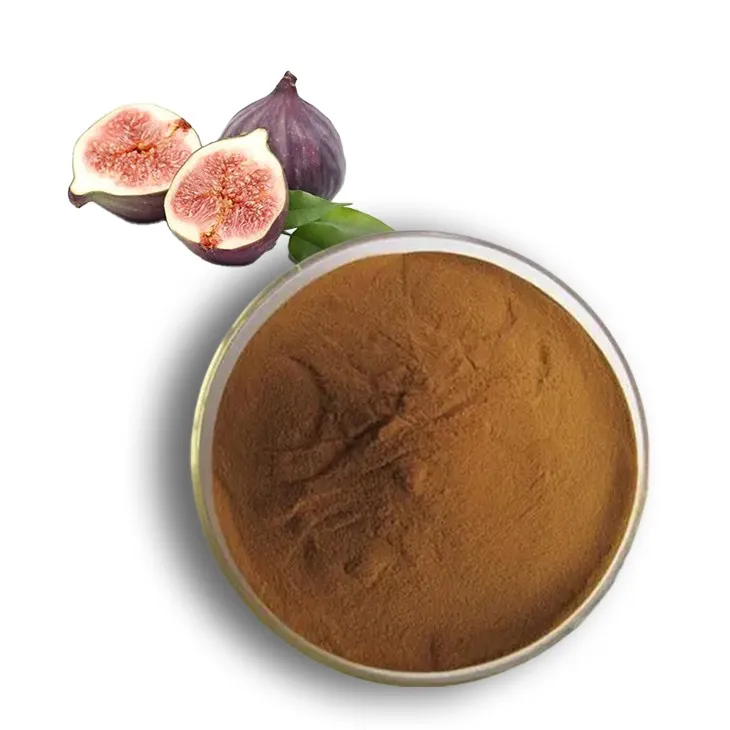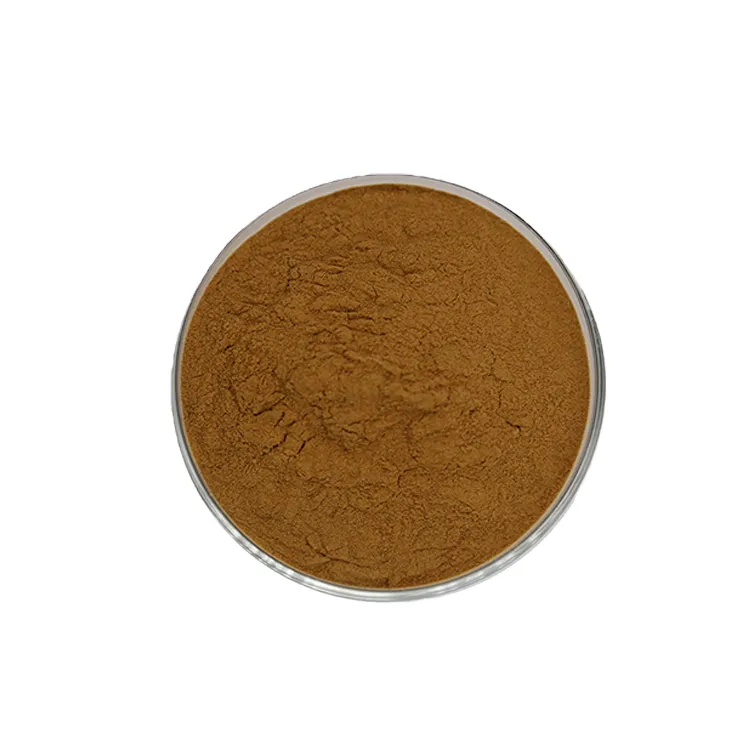- 0086-571-85302990
- sales@greenskybio.com
Extract fig extract by steam distillation.
2024-11-26

1. Introduction
Steam distillation is a widely used method for extracting essential oils and other valuable compounds from various plant materials. Figs, with their unique flavor and potential health benefits, are no exception. The extraction of Fig Extract through steam distillation is a fascinating process that has implications in multiple industries, including cosmetics, food, and medicine.

2. The Steam Distillation Process
2.1 Preparation of Figs
Before the steam distillation process can begin, the figs need to be properly prepared. Fresh figs are usually preferred as they contain a higher amount of volatile compounds. The figs are first washed thoroughly to remove any dirt, debris, or pesticides. They are then cut into small pieces or crushed slightly. This increases the surface area of the figs, allowing for more efficient extraction during the steam distillation process.
2.2 The Steam Distillation Setup
A typical steam distillation setup consists of a distillation flask, a condenser, and a collection vessel. The prepared figs are placed in the distillation flask. Steam is then introduced into the flask. The steam can be generated from an external steam generator or by boiling water in a separate compartment connected to the distillation flask. As the steam passes through the fig material, it causes the volatile compounds in the figs to vaporize.
2.3 Vapor Condensation and Collection
The vaporized compounds, along with the steam, then pass into the condenser. The condenser cools the vapor, causing it to condense back into a liquid state. This liquid, which contains the Fig Extract along with water, is then collected in the collection vessel. Since the Fig Extract is immiscible with water in most cases, it can be easily separated from the water layer using techniques such as decantation or separation funnels.

3. Unique Characteristics of Fig Extract
3.1 Aroma and Flavor
The fig extract obtained through steam distillation has a distinct and pleasant aroma. It has a sweet, fruity smell with earthy undertones. This unique aroma makes it a valuable ingredient in the food and perfume industries. In the food industry, it can be used to add a natural fig flavor to products such as desserts, jams, and beverages. In perfumery, it can contribute to creating complex and alluring fragrances.
3.2 Chemical Composition
Fig extract contains a variety of chemical compounds. Some of the major components include volatile esters, terpenes, and phenolic compounds. Volatile esters are responsible for the sweet fruity aroma of the extract. Terpenes contribute to the overall fragrance and may also have potential health benefits. Phenolic compounds are known for their antioxidant properties, which can play an important role in cosmetics and medicine.

4. Significance in Cosmetics
4.1 Skin Benefits
The antioxidant properties of the phenolic compounds in fig extract make it a beneficial ingredient in cosmetics. Antioxidants help to protect the skin from damage caused by free radicals, which can lead to premature aging, wrinkles, and other skin problems. Fig extract can also have moisturizing properties, helping to keep the skin hydrated and soft. It may be used in products such as creams, lotions, and serums.
4.2 Fragrance in Cosmetics
As mentioned earlier, the pleasant aroma of fig extract makes it a popular choice for adding a natural and appealing fragrance to cosmetics. It can be used in a variety of products, from body washes to perfumes. The natural origin of the fragrance is also an advantage, as consumers are increasingly interested in products with natural ingredients.
5. Significance in Food
5.1 Flavor Enhancement
In the food industry, fig extract is used to enhance the flavor of various products. For example, in the production of fig - flavored yogurts, the extract can provide a more intense and natural fig flavor compared to artificial flavorings. It can also be added to baked goods such as cakes and muffins to give them a unique fruity taste.
5.2 Nutritional Value
Figs are a nutritious fruit, and some of their beneficial components can be carried over into the extract. Although the extract is used in relatively small quantities in food products, it can still contribute to the overall nutritional profile. For example, the phenolic compounds with their antioxidant properties can add to the health - promoting aspects of the food.
6. Significance in Medicine
6.1 Antioxidant and Anti - inflammatory Properties
The phenolic compounds in fig extract have antioxidant properties, which can help in reducing oxidative stress in the body. Oxidative stress is associated with various diseases such as cancer, heart disease, and neurodegenerative disorders. Additionally, some studies suggest that fig extract may have anti - inflammatory properties. Inflammation is a key factor in many chronic diseases, and reducing inflammation can have a positive impact on health.
6.2 Potential in Traditional Medicine
In traditional medicine, figs have been used for various purposes. The extract obtained through steam distillation may inherit some of these traditional uses. For example, figs have been used to treat digestive problems, and the extract may have potential in this area as well. However, more research is needed to fully understand and validate these traditional uses in the context of modern medicine.
7. Conclusion
The extraction of fig extract through steam distillation is a complex yet rewarding process. The unique characteristics of the extract, including its aroma, flavor, and chemical composition, make it a valuable ingredient in cosmetics, food, and medicine. As research continues, we can expect to discover more about the potential benefits of fig extract and its applications in different industries.
FAQ:
Question 1: What is the basic principle of steam distillation for fig extract?
Steam distillation works on the principle that when steam is passed through the fig material, the volatile components in the figs vaporize along with the steam. Since the boiling point of water is lower than that of many organic compounds in the fig extract, the steam provides the energy to volatilize these compounds at a relatively lower temperature. This vapor mixture is then condensed back to a liquid, and the fig extract can be separated from the water layer, usually through further separation techniques like decantation or extraction with an appropriate solvent.
Question 2: What are the main components in fig extract obtained by steam distillation?
The fig extract obtained by steam distillation contains various components. It has volatile organic compounds such as esters, aldehydes, and terpenes. Some of these components contribute to the characteristic aroma of figs. Additionally, it may also contain small amounts of phenolic compounds and other bioactive substances that have potential antioxidant and antimicrobial properties.
Question 3: How does fig extract obtained by steam distillation benefit the cosmetics industry?
In the cosmetics industry, fig extract from steam distillation offers several benefits. Its pleasant aroma can be used as a natural fragrance in various products like perfumes, lotions, and creams. The bioactive components in the extract, such as antioxidants, can help in protecting the skin from oxidative damage caused by free radicals. It may also have moisturizing properties, which can improve the skin's hydration level and overall appearance.
Question 4: What role does fig extract play in the food industry?
In the food industry, fig extract can be used as a natural flavor enhancer. It can add a unique and pleasant flavor to food products such as desserts, confectioneries, and beverages. The antioxidant properties of the extract can also help in preserving the quality of food by preventing lipid oxidation and spoilage. Moreover, it may have potential prebiotic properties, which can be beneficial for gut health when consumed in food products.
Question 5: How is the fig extract obtained by steam distillation used in medicine?
In medicine, the fig extract obtained by steam distillation may have potential antimicrobial properties, which can be used to fight against certain infections. The antioxidant components can also play a role in reducing oxidative stress in the body, which is associated with various diseases. Additionally, some of the bioactive compounds in the extract may have anti - inflammatory properties, which could be explored for the treatment of inflammatory conditions.
Related literature
- Steam Distillation of Plant Extracts: A Comprehensive Review"
- "Fig Extracts: Chemical Composition and Their Potential in Therapeutics"
- "The Role of Natural Extracts, including Fig Extract, in Cosmetics"
- "Fig Extract in Food Preservation: A Promising Natural Alternative"
- ▶ Hesperidin
- ▶ Citrus Bioflavonoids
- ▶ Plant Extract
- ▶ lycopene
- ▶ Diosmin
- ▶ Grape seed extract
- ▶ Sea buckthorn Juice Powder
- ▶ Fruit Juice Powder
- ▶ Hops Extract
- ▶ Artichoke Extract
- ▶ Mushroom extract
- ▶ Astaxanthin
- ▶ Green Tea Extract
- ▶ Curcumin
- ▶ Horse Chestnut Extract
- ▶ Other Product
- ▶ Boswellia Serrata Extract
- ▶ Resveratrol
- ▶ Marigold Extract
- ▶ Grape Leaf Extract
- ▶ New Product
- ▶ Aminolevulinic acid
- ▶ Cranberry Extract
- ▶ Red Yeast Rice
- ▶ Red Wine Extract
-
Echinacea Extract
2024-11-26
-
Carrageenan Extract Powder
2024-11-26
-
Citrus Aurantii Extract
2024-11-26
-
Cat Claw Extract
2024-11-26
-
Red Wine Extract
2024-11-26
-
Resveratrol extract
2024-11-26
-
Nettle Root Extract
2024-11-26
-
Eucommia Ulmoides Extract
2024-11-26
-
Mango flavored powder
2024-11-26
-
Acerola Juice Powder
2024-11-26





















